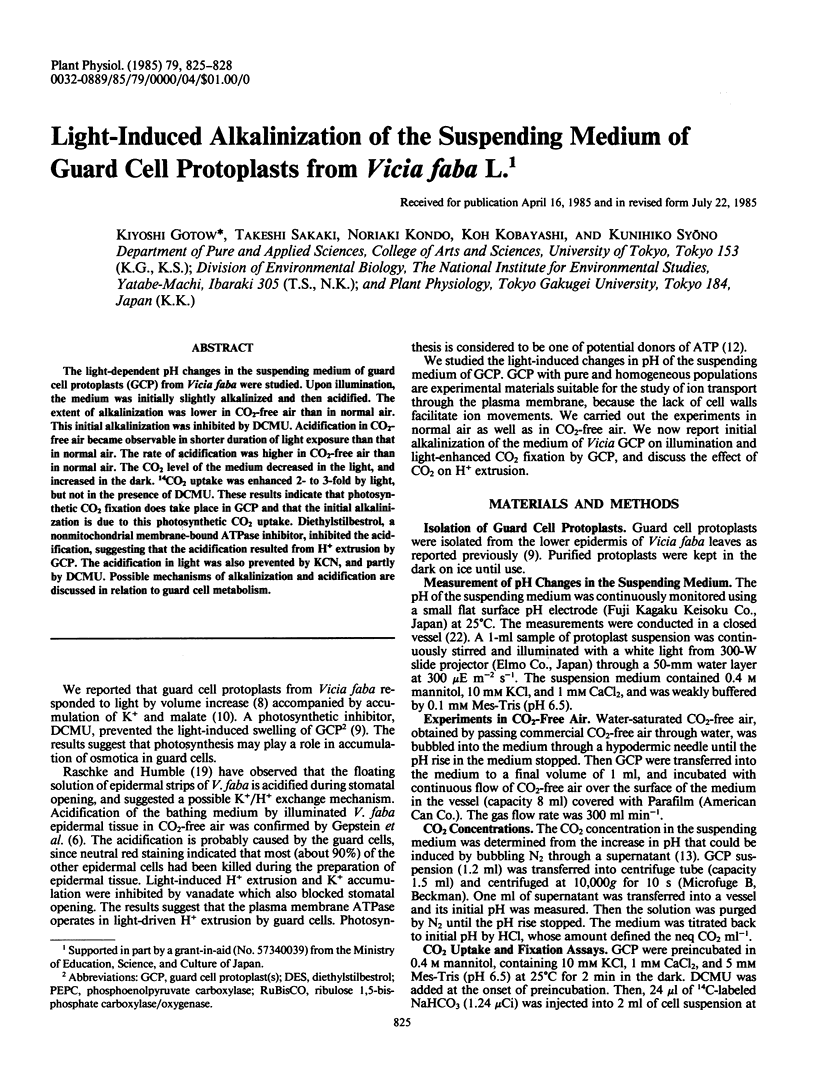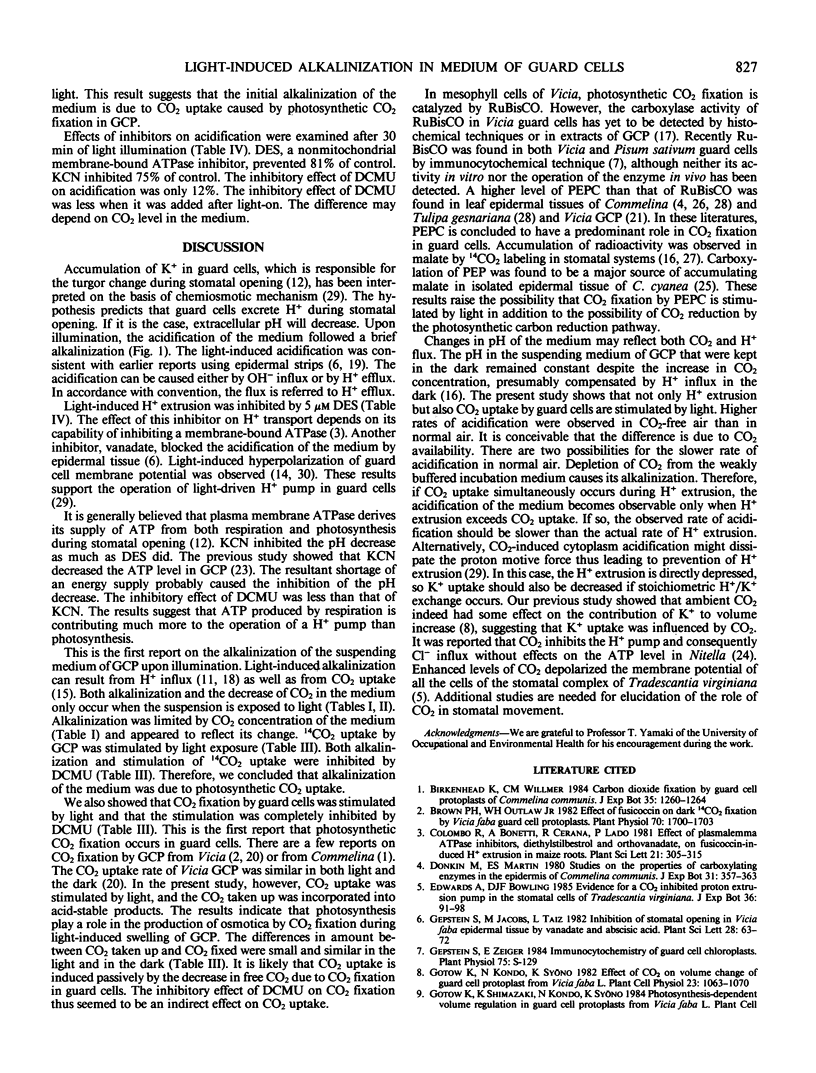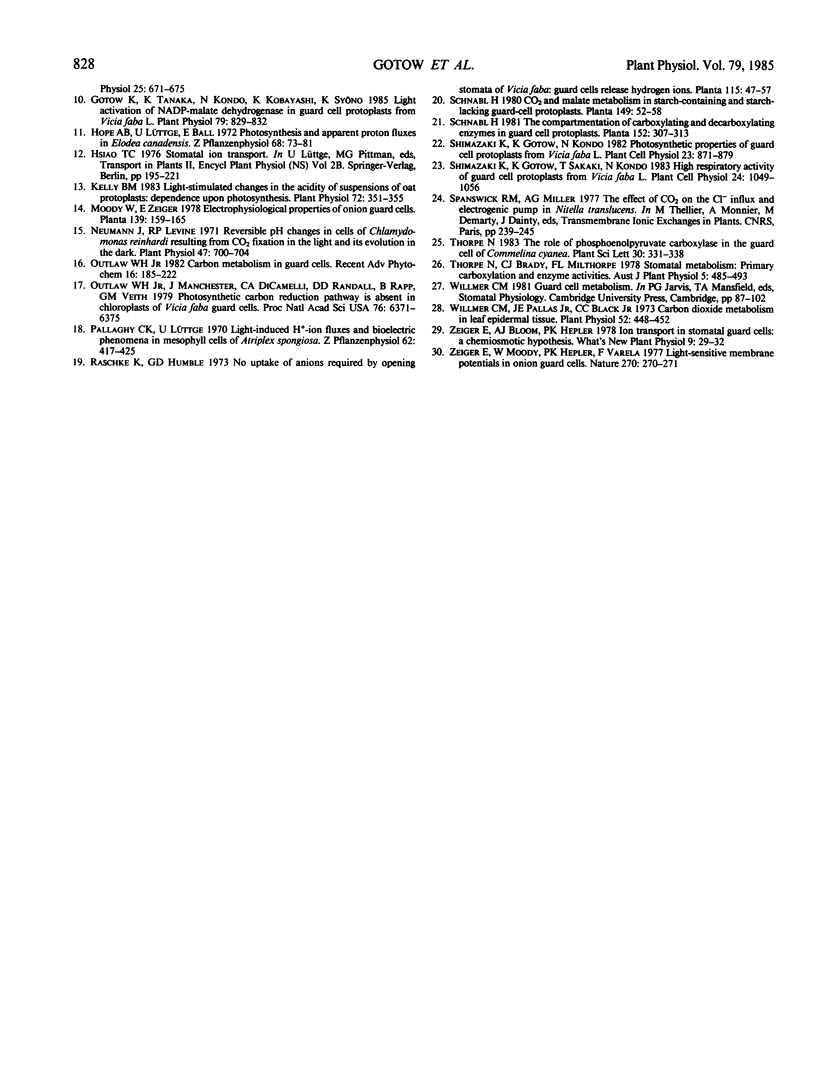Abstract
The light-dependent pH changes in the suspending medium of guard cell protoplasts (GCP) from Vicia faba were studied. Upon illumination, the medium was initially slightly alkalinized and then acidified. The extent of alkalinization was lower in CO2-free air than in normal air. This initial alkalinization was inhibited by DCMU. Acidification in CO2-free air became observable in shorter duration of light exposure than that in normal air. The rate of acidification was higher in CO2-free air than in normal air. The CO2 level of the medium decreased in the light, and increased in the dark. 14CO2 uptake was enhanced 2- to 3-fold by light, but not in the presence of DCMU. These results indicate that photosynthetic CO2 fixation does take place in GCP and that the initial alkalinization is due to this photosynthetic CO2 uptake. Diethylstilbestrol, a nonmitochondrial membrane-bound ATPase inhibitor, inhibited the acidification, suggesting that the acidification resulted from H+ extrusion by GCP. The acidification in light was also prevented by KCN, and partly by DCMU. Possible mechanisms of alkalinization and acidification are discussed in relation to guard cell metabolism.
Full text
PDF



Selected References
These references are in PubMed. This may not be the complete list of references from this article.
- Brown P. H., Outlaw W. H. Effect of Fusicoccin on Dark CO(2) Fixation by Vicia faba Guard Cell Protoplasts. Plant Physiol. 1982 Dec;70(6):1700–1703. doi: 10.1104/pp.70.6.1700. [DOI] [PMC free article] [PubMed] [Google Scholar]
- Gotow K., Tanaka K., Kondo N., Kobayashi K., Syōno K. Light Activation of NADP-Malate Dehydrogenase in Guard Cell Protoplasts from Vicia faba L. Plant Physiol. 1985 Nov;79(3):829–832. doi: 10.1104/pp.79.3.829. [DOI] [PMC free article] [PubMed] [Google Scholar]
- Kelly B. M. Light-Stimulated Changes in the Acidity of Suspensions of Oat Protoplasts: Dependence upon Photosynthesis. Plant Physiol. 1983 Jun;72(2):351–355. doi: 10.1104/pp.72.2.351. [DOI] [PMC free article] [PubMed] [Google Scholar]
- Neumann J., Levine R. P. Reversible pH Changes in Cells of Chlamydomonas reinhardi Resulting from CO(2) Fixation in the Light and Its Evolution in the Dark. Plant Physiol. 1971 May;47(5):700–704. doi: 10.1104/pp.47.5.700. [DOI] [PMC free article] [PubMed] [Google Scholar]
- Outlaw W. H., Manchester J., Dicamelli C. A., Randall D. D., Rapp B., Veith G. M. Photosynthetic carbon reduction pathway is absent in chloroplasts of Vicia faba guard cells. Proc Natl Acad Sci U S A. 1979 Dec;76(12):6371–6375. doi: 10.1073/pnas.76.12.6371. [DOI] [PMC free article] [PubMed] [Google Scholar]
- Willmer C. M., Pallas J. E., Black C. C. Carbon dioxide metabolism in leaf epidermal tissue. Plant Physiol. 1973 Nov;52(5):448–452. doi: 10.1104/pp.52.5.448. [DOI] [PMC free article] [PubMed] [Google Scholar]


